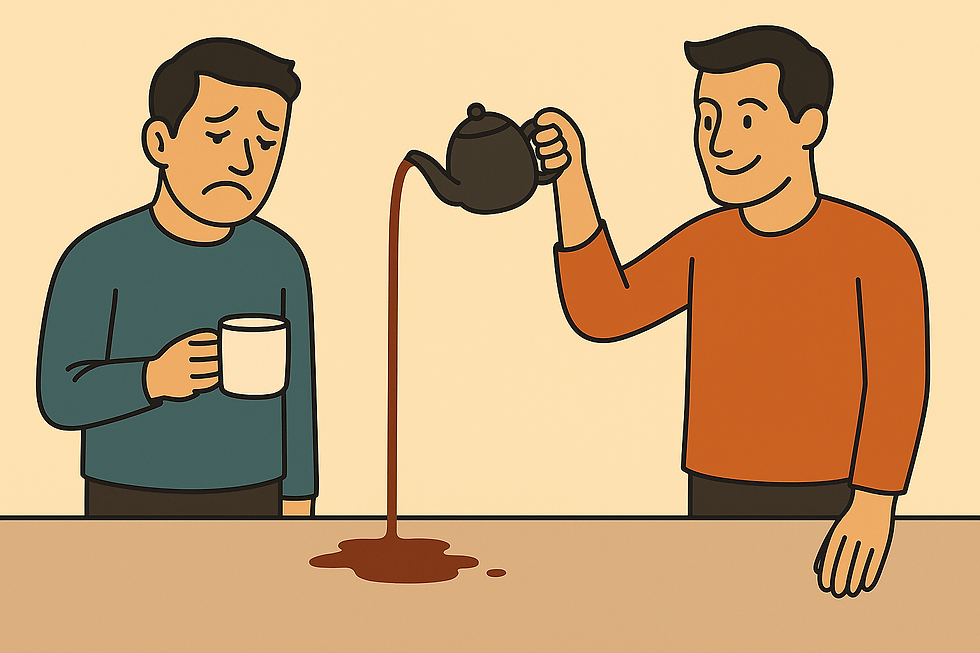Why Help at Work Often Misses the Mark
- Colin Fisher, Julianna Pillemer, Teresa Amabile
- Sep 11
- 3 min read
Updated: Sep 17

Have you ever received help that wasn’t actually…helpful? Have you ever tried to help a coworker, but felt like you didn’t quite hit the mark?
Unhelpful help—actions intended to benefit others that fail to achieve their intended aims—is more common than you’d think. And unhelpful help at work can be more than just a waste of time—it can derail projects and undermine relationships with coworkers and the organization.
The academic literature seldom discusses unhelpful help, with many studies acting as if it doesn’t exist. And we, too, discovered the importance of unhelpful help by accident — in our article When the Thought Doesn’t Count: The Dynamics of Unhelpful Help in Creative Organizations. We were interested in the helping process, so we studied Glow Design—a design consultancy famous for its deep-rooted culture of helping. We spent several years gathering data from interviews and daily diary entries. Despite the organization’s commitment to the value of people supporting one another, our data revealed a startling pattern: 25% of help exchanges were perceived as not actually helpful.
Why does help, even with the best intentions, so often fall flat?
Why Help Goes Awry
Our research shows that creating a strong helping culture doesn’t guarantee that help will be effective. In fact, when helping becomes ubiquitous, it can backfire in three common ways:
Vague Requests and Misalignment In organizations that prize helpfulness, people are encouraged to ask—but not necessarily to ask well. We saw frequent “fuzzy asks,” where requests were unclear or too open-ended. This left would-be helpers guessing about what was really needed. As one participant put it, “It wasn’t clear what the team wanted—I was just told to join the discussion.” Without clarity, the help missed the mark.
Overconfidence and Letdowns Vague requests led help-seekers to assume their needs were understood. Meanwhile, helpers—eager to say yes—didn’t always deliver. This created mismatched expectations. Recipients believed help was on the way, only to be left holding the bag when others failed to follow through.
Frustration and Eroded Trust When help disappoints, it doesn’t just stall progress—it strains relationships. Recipients felt abandoned. Helpers, too, were frustrated when their efforts were ignored or misinterpreted. Without feedback, no one could improve.
How to Make Help Actually Helpful
Organizations can improve by focusing not just on how often people help, but on how well they do it. Three strategies can make a difference:
Clarify the Ask Solving a problem starts with identifying it. Leaders should encourage open conversations about uncertainty and support employees in articulating what they need. Even help defining a problem can be a major contribution.
Avoid Over-Politeness Out of fear of sounding demanding, employees often under-specify their needs. But being clear—about what you need, when, and why—is a gift to the helper. Organizations should train employees to ask directly while remaining respectful.
Follow Up with Gratitude and Closure Most helpers appreciate a “thank you,” but what they value even more is knowing the result of their effort. Show them what impact they had. It deepens relationships and helps everyone improve.
The Takeaway: It’s Not Just About More Help, But Better Help
Effective help is essential to learning, innovation, and teamwork. But unless it’s well-targeted and followed through, even the most generous support can fall short. Cultivating a culture of skilled helping—not just frequent helping—is key to making collaboration work.


